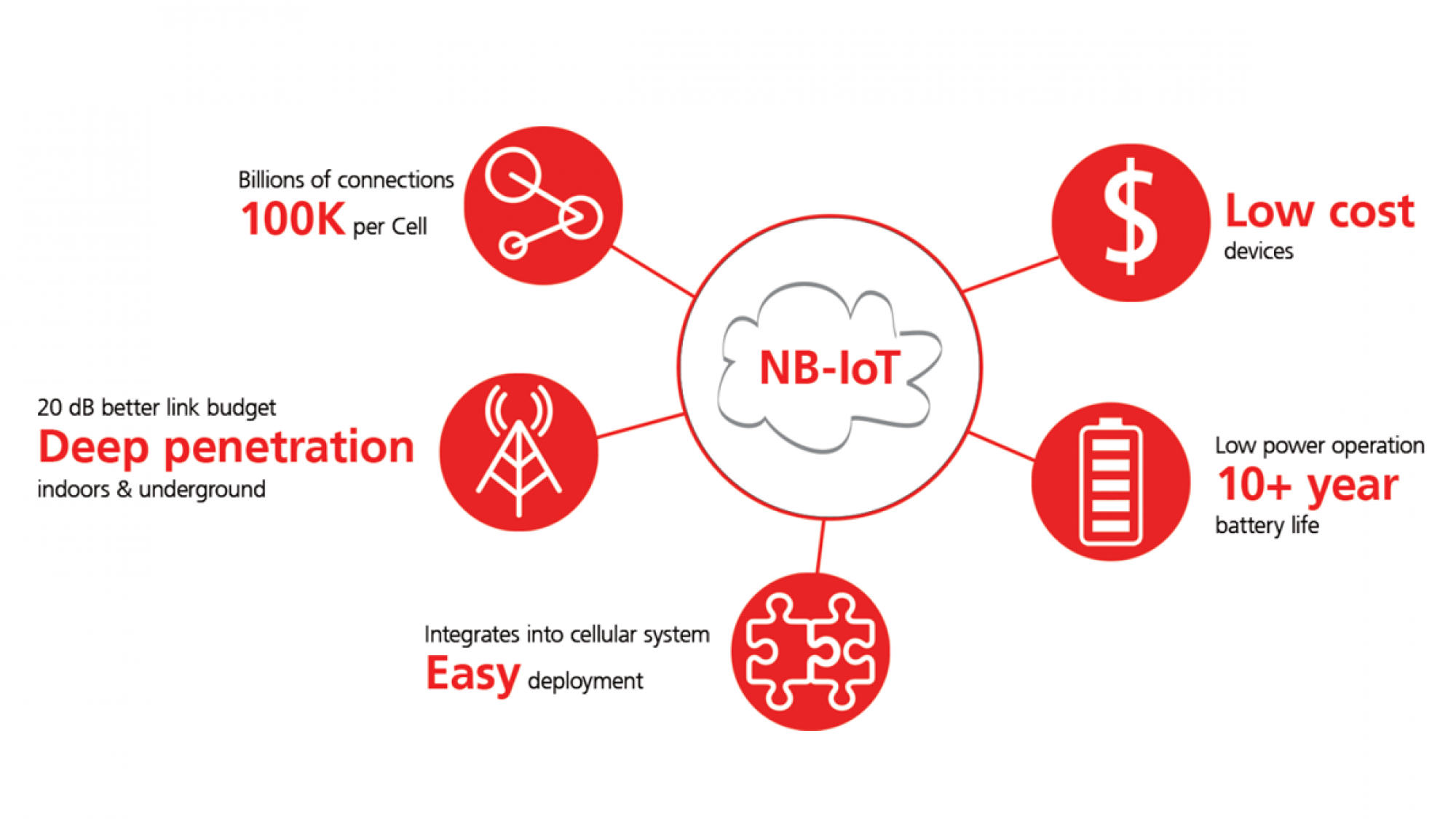
Narrow Band IoT (NB-IoT) belongs to the category of cellular IoT protocols, basically integrating the Cellular technology in the IoT regime. Basically, it’s a way of connecting physical things (like sensors) to the internet using the same cellular networks behind a typical smartphone. Instead of needing to create a new, private network to house IoT devices, those can operate on the same mobile network as smartphones. Cellular IoT provides an alternative to low power, wide area networks (acronym: “LPWAN”) like the non-cellular “LoRaWAN” and “Sigfox” technologies, which operate in unlicensed bands. NB-IoT addresses some of the defects of current technologies, such as poor reliability, poor security, high operational and maintenance costs and a complexity of overlay network deployment. NB-IoT exhibits advantages such as wide area coverage, fast upgrade of existing network, low-power consumption, long battery lifetime (guaranteeing 10-year battery life), low cost terminal and high reliability.
By performing a comparison of the inherent capabilities of NB-IoT with other LPWAN technologies like e-MTC, SigFox and LoRa, NB-IoT offers better performance. Furthermore, by exploring all the technologies in terms of network investment, coverage scenario, uplink and downlink traffic and network reliability, NB-IoT is the most suitable technology. Performance -wise, NB-IoT guarantees 20+dB coverage, ~1000x connections, ~10 years using only 200 KHz bandwidth whereas the other technologies like eMTC, SigFox offer far less in terms of performance. NB-IoT has also quite an extensive ecosystem mainly because of its support from many global top operators.
The respective architecture of a NB-IoT network is shown at figure 4 below. Similarly to LoRaWAN network architecture described above, the NB-IoT terminals (basically sensors that are integrated to various devices) transmit the application-dependent sensing data – using the same cellular technology of our mobile devices – to a cellular base station. The data are then forwarded to an NB-IoT platform for secure storage and management. If applicable, the NB-IoT platform will also forward the corresponding data to an application server for further processing.
Request info About Our Services
For more info please download the brochure.
